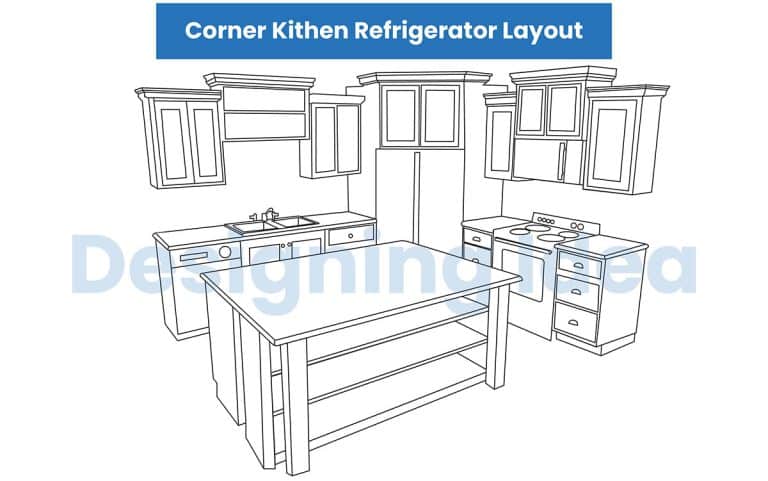17 Types Of Can Openers (Styles & Uses)
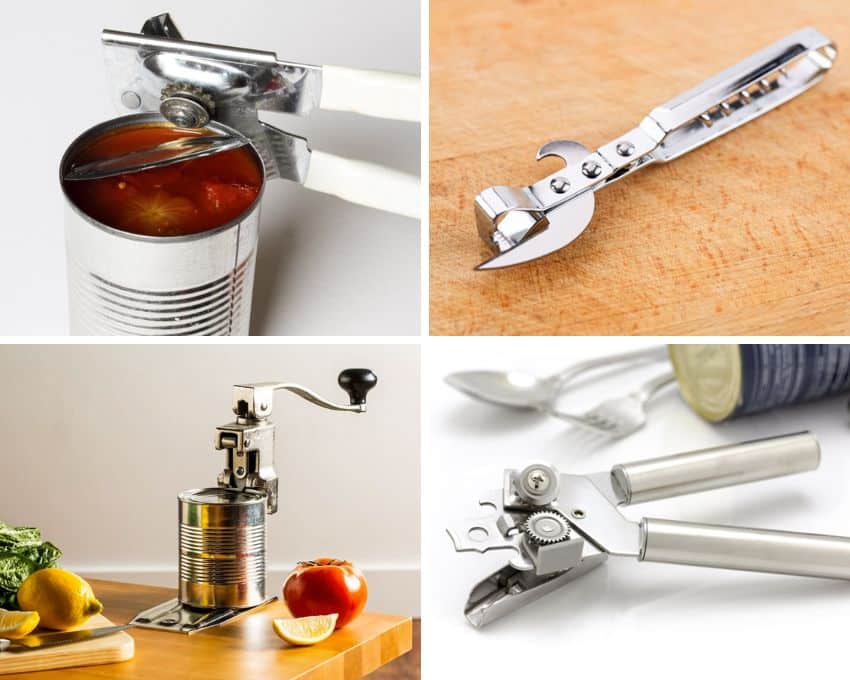
When you do not feel like laboriously cooking meals, having a stock of canned goods could be a lifesaver. Numerous homeowners keep canned food in their refrigerators and kitchen cabinets for future times as it is very convenient to prepare, requiring very minimal to zero effort. Although canned food that is ready to eat is practical, opening the can might be challenging at times. Since these cans are frequently constructed of tin or metal, it is not possible to open them with your own bare hands. To open the can, you need to use a particular tool or device. Fortunately, today’s technology has made it easier for you to open these cans. You do not need to worry about fumbling with the can lid. You can now pick the opener that ideally suits your needs from a wide range of available styles. Let us discuss the different types of can openers in this article.
Different Types Of Can Openers
Generally described, a can opener is among the most frequently used kitchen accessories or tools that enable you to easily and conveniently cut metal cans. The way they work is also very straightforward; they make a perforation in the metal can and quickly rip off or tear apart the lid.
Given the wide range of openers available, you should have the best one possible to help you save effort and time. The following are some of the most popular and well-liked options that you can acquire in practically all types of homes nowadays.
Single Wheel Can Opener
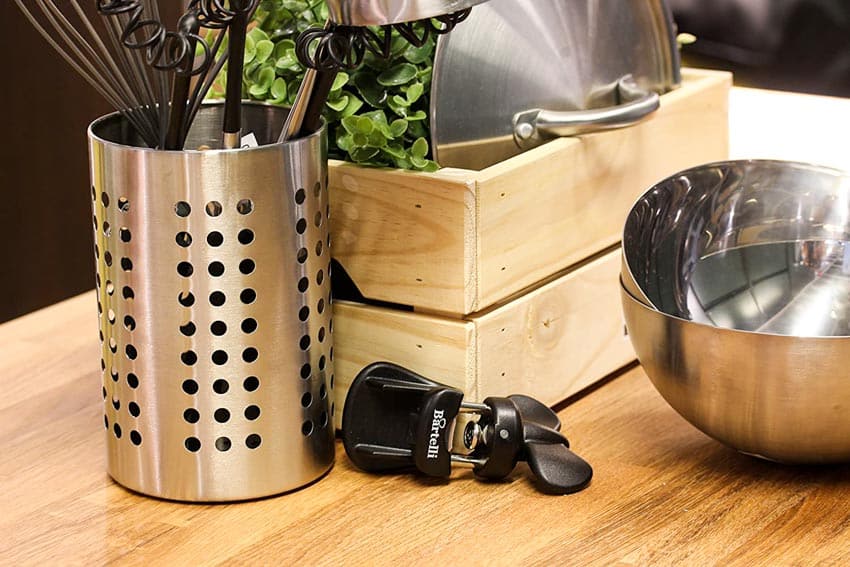
In terms of style and functionality, a single-wheel can opener is extremely comparable to a bunker type. However, the primary distinction is that this wheel-style opener includes a magnet that hooks to the lid to hold it in position.
Moreover, it is more of a convenient option for those moments when you find it difficult to open a metal can, and all you eventually wind up with are jagged and uneven corners on the can that might injure your fingers as well.
Additionally, a single-wheel opener enables faster, safer, and smoother can opening. Because of its very fine grating, you can easily cut off a can with an extremely smooth and clean finish.
The magnets also aid to keep the can in position as the opener’s wheel progressively slices around the rims of the can. The best way to handle this opener is to place it atop the can lid so that the wheel goes quite near the rim. Afterward, you can rotate the key to move the wheel and simply cut through the can lid.
Side Cut Can Opener
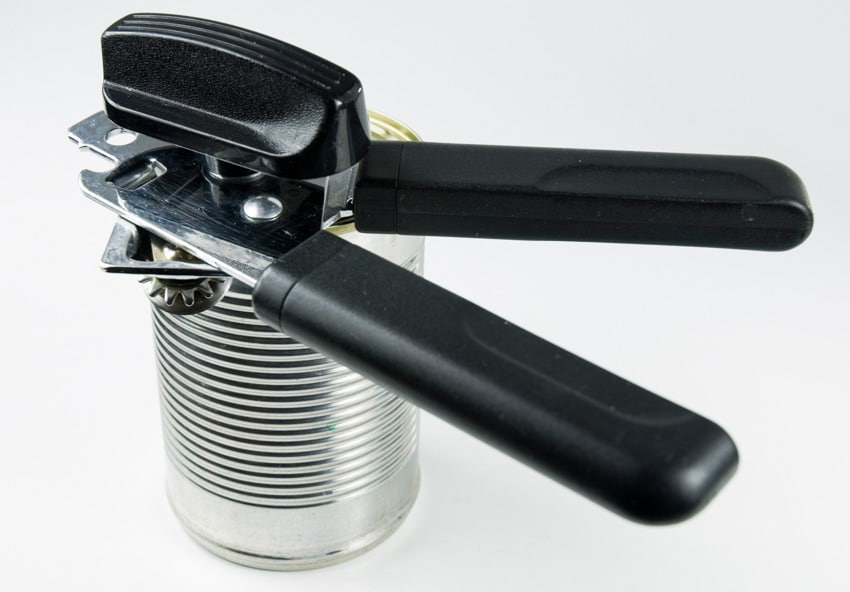
One of the very few unique can-opening innovations that were developed throughout the 1980s was the side-cut can opener. Conventional openers operate by cutting down through the lid starting from the top, resulting in a precise release of the top and the rim staying connected to the can.
However, side-cut openers employ a cutting and rolling wheel that merely cuts through the sides of the can under the rim. This results in the precise removal of both the rim as well as the entire lid.
Furthermore, they contain a toothed wheel as well as a cutting wheel. This extra component improves your grip when cutting through the can’s lid. Also, because side-cut openers are essentially intended to pierce the exterior rim of the can, they leave a very tidy and flawless finish.
Smooth Edge Can Opener

Sharp edges are eliminated when you are opening cans using a smooth-edge can opener, which involves cutting along the sides of the cans underneath the border of the lid.
By just pushing a specific button, the claw simply removes the can lid while keeping your hands clean. Some smooth-edge openers also feature an ergonomic twisting knob that makes opening cans a breeze.
The powerful, toughened steel cutting wheel is kept sanitary to prevent contact with the content of the can, and the top pliers enable no-touch lid detachment.
Butterfly Can Opener
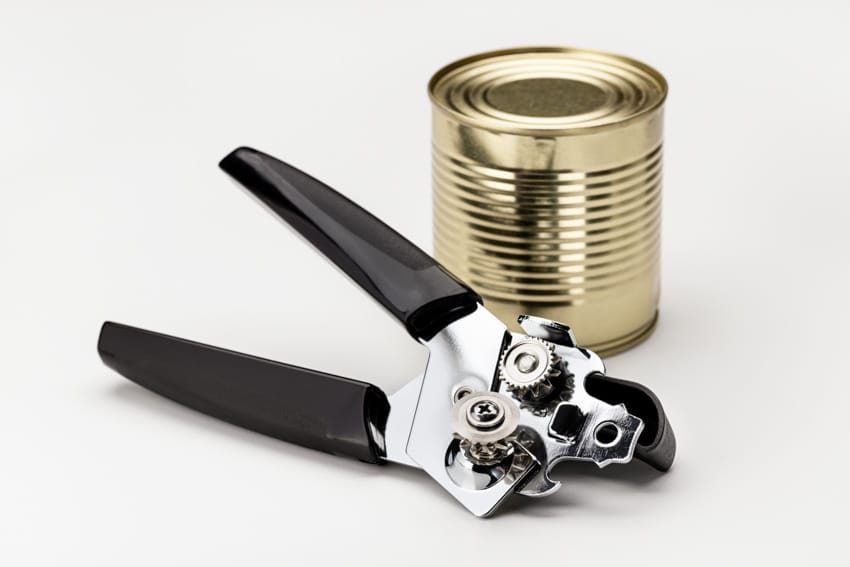
The butterfly opener is a type of manual can opener that looks and works similarly to a bunker opener. This opener does have a revolving cutting wheel that enables you to tear the lid of the can apart, securely grip the lid, and then slowly open the can by turning the lid gently.
Furthermore, it frequently comes with a crank along with hooks to aid in turning the can. This makes it possible for the opener’s toothed wheel to effortlessly remove the lid of the can. In addition, the proper technique for using the butterfly opener is to initially pierce the lid using the sharp key-like type of sharp edge and then firmly tighten it with the opener’s pliers.
Afterward, by cranking up the lever, you can cut through the cover using the sharp wheels at the backside. When compared to a lever or claw-style opener, a butterfly opener may be a little more sophisticated and challenging to operate.
Manual Can Opener
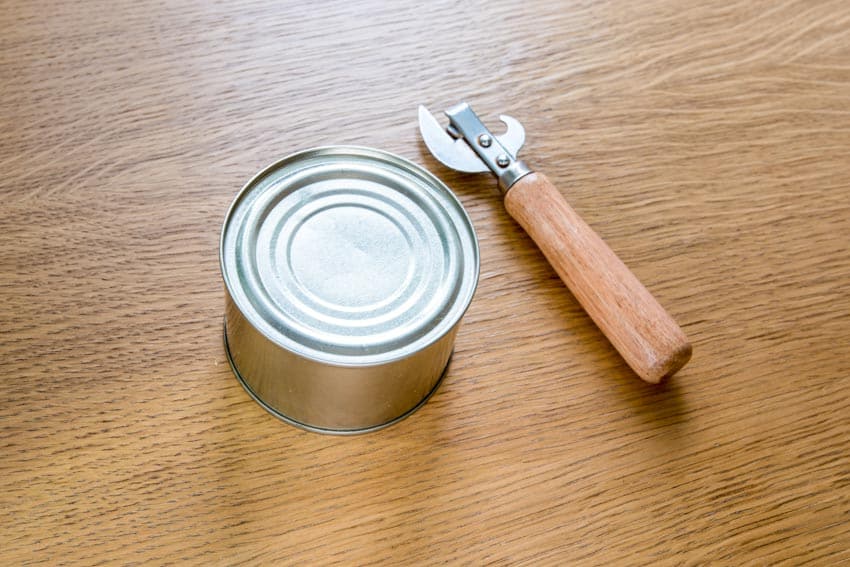
A manual can opener would be an excellent solution for those individuals on a tight budget because these openers are affordable and widely available. They are also quite simple to use; all you have to do is simply turn the wheel or crank, then the lid will smoothly slip through the rotating blades. This motion of the opener helps disclose the top of the can, allowing you to effortlessly drain the content.
On the other hand, one significant disadvantage of this opener is that it requires exceptionally stable hands as well as a good grasp to handle. This implies that individuals with medical issues such as arthritis may have difficulty using a manual opener.
Lever Type Can Opener
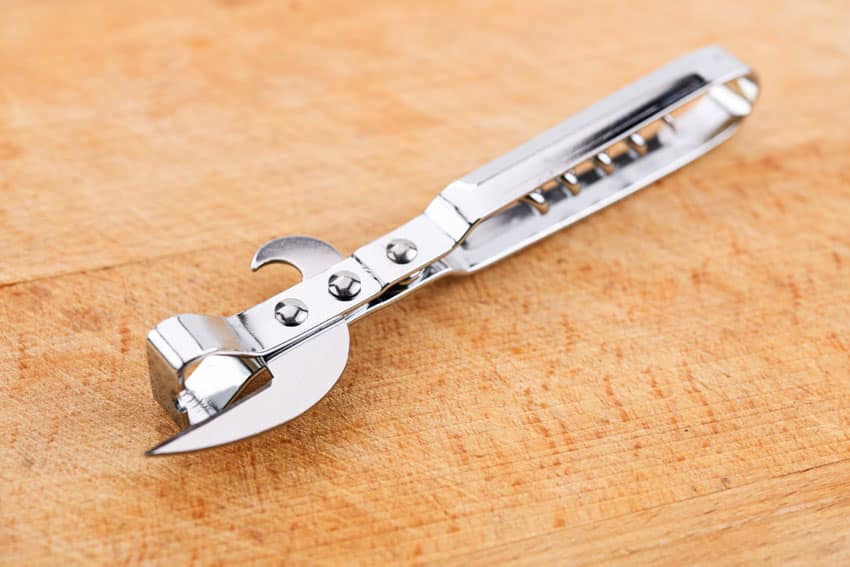
One of the most fundamental and primitive types of can openers is the lever-type version, which has grown significantly in popularity over time and is still used in many homes. It is perhaps the most well-known device for cutting off cans in certain countries.
It includes a huge sickle-shaped razor that helps penetrate and break the can’s lid. On the backside of this curve-shaped razor, you will find a type of barrier or shield that prevents the blade from cutting too deeply into the can. This helps in preventing the blade from coming into contact with the content of the can.
Moreover, the lever-type opener should be used by perforating the rims of the can lid and then gradually driving the sickle-shaped razor into the can. You can saw down the edges with utmost caution as this can result in a container with extremely jagged corners.
Under Cabinet Can Opener
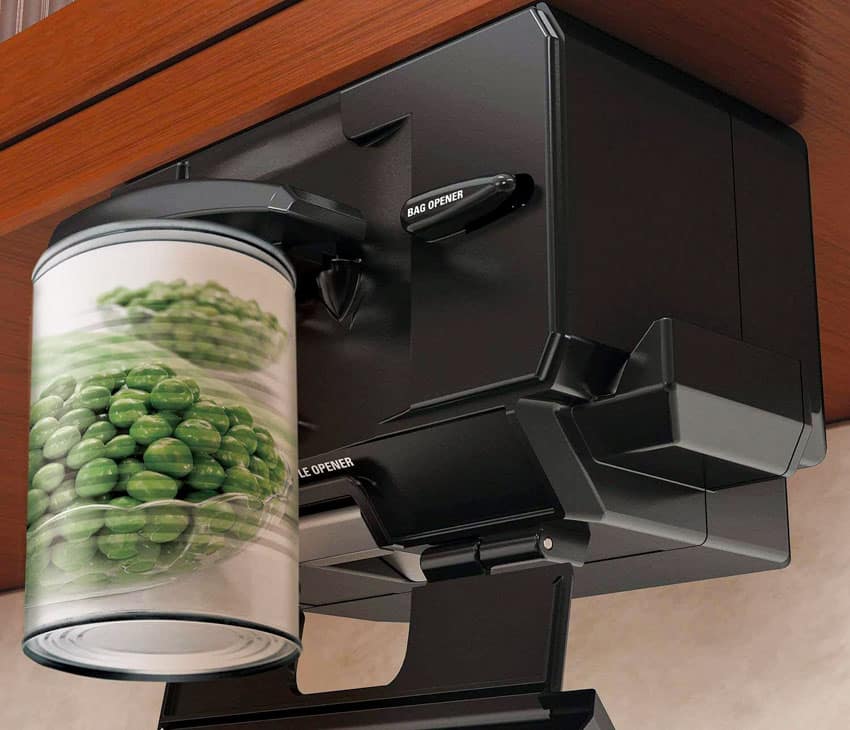
An under-cabinet can opener is one clever device that helps you save room, especially in small kitchen layout dimensions. This sort of opener can be installed beneath the kitchen counter or elsewhere in the kitchen and takes up no cabinet or counter space when mounted.
Some under-cabinet openers are simply screwed into place, while others need the use of double-sided adhesive or a particularly bonding side that you push onto the undersurface of the cabinet or counter. Some under-cabinet openers are also electric-powered, allowing for an ultra-easy can opening process.
Church Key Opener
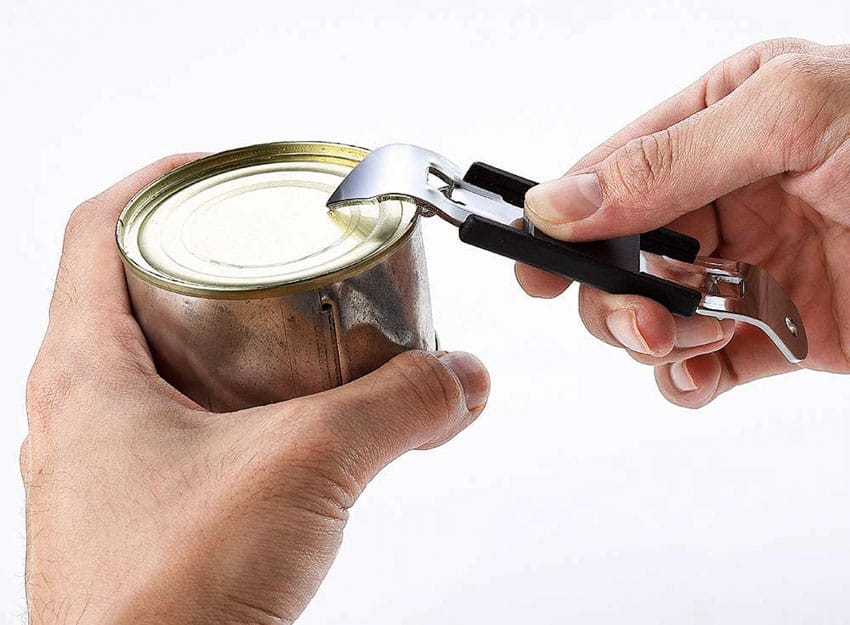
A church key can opener was established in the 1890s and has therefore been employed in countless households. While it was not termed a ‘church key’ opener back then, the form and style of the opener made it resemble a giant standard key.
Moreover, a church key opener is popular with hikers and beer enthusiasts. Its appeal arises from the idea that it is quite straightforward to use. The church key opener is a simple hand-operated opener that is often used to cut off the smooth top of beer cans along with the cork of various wine bottles.
Church-key openers are constructed of hammered metal and feature a sharp edge that facilitates the perforation of the can’s lid. The proper technique to use is to initially secure the barrier tightly at the can’s edge.
Perforate the lid using the sharp edge of the opener. Afterward, in an easy and fast movement, you can start lifting the opener to help rip a large portion of the can, enabling you to empty its components.
Electric Can Opener

The very first electric can opener was developed in the 1930s, and they were brought back in the 1950s. Electric openers were developed to provide the most convenient can opening experience possible.
These openers are indeed simple to operate because all you are required to do is press the button or switch the lever, depending on the model. Furthermore, electric openers are classified into two types: under-cabinet and freestanding versions.
The majority of these electric openers include magnetic materials to keep the can in position. The key is to place the can underneath the opener, and then it will begin revolving on top of the can, ripping the lid apart in a short amount of time.
Electric openers, on the other hand, have the disadvantage of being marginally more pricey than some types of can openers and requiring two hands to function.
But notwithstanding these minor drawbacks, they can be incredibly useful, particularly if you struggle with arthritis or are frequently busy in the kitchen. They do an amazing job when it comes to execution and efficiency by tearing off the lid of a can in a matter of seconds. They also leave the corners of the can very even, ensuring that there is no risk of you injuring your hands and fingers.
Even though these electric openers take up room on the counter surface, they are indeed an excellent solution for individuals who have a weak grip or lack upper-limb power.
Plus, these advanced openers are certainly one of the top-ranked kitchen tools, and they are an essential addition to any smart kitchen design due to their performance, simplicity of use, and practicality. See our list of essential small kitchen appliances here.
Bunker Opener

A bunker opener is the most common one-handed opener, consisting of plier-type grips, a toothed disc, as well as a key, all of which work seamlessly to provide a smooth and effortless can-opening procedure.
This opener’s bunker mechanism securely clutches the can as you crank up the handle to twist the toothed disc. To use the bunker opener, you must first hold the can with the pliers. Subsequently, using the toothed disc, you can crank the key and gradually slice through the can’s lid.
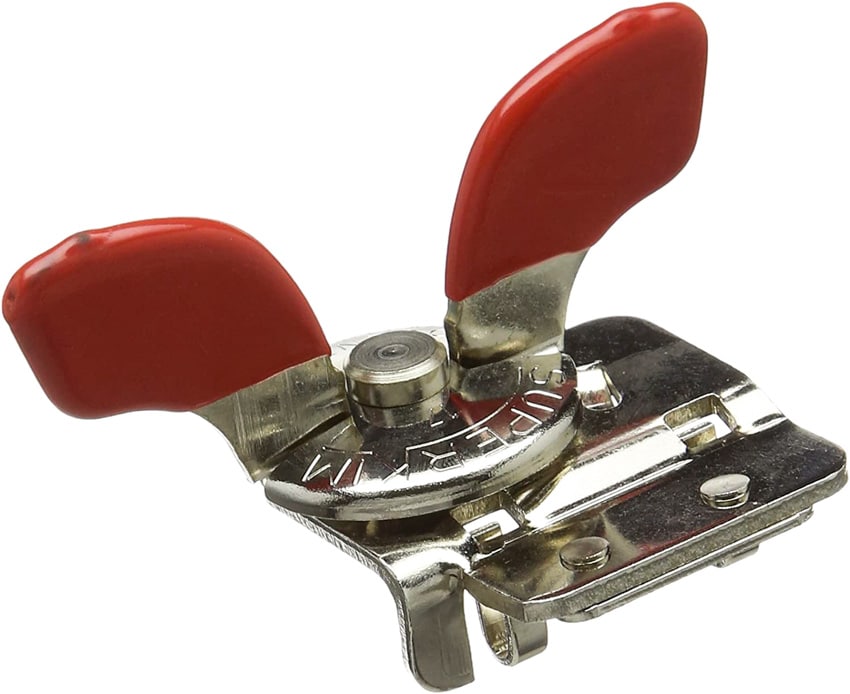
See this bunker can opener at Amazon [sponsored link]
There are also compact models that can be packed in a backpack or stowed in a survival cache for emergency situations. Rather tahn having a pliers style handle this model sits on the top and opens the item by twisting the handle clockwise.
Wand Opener
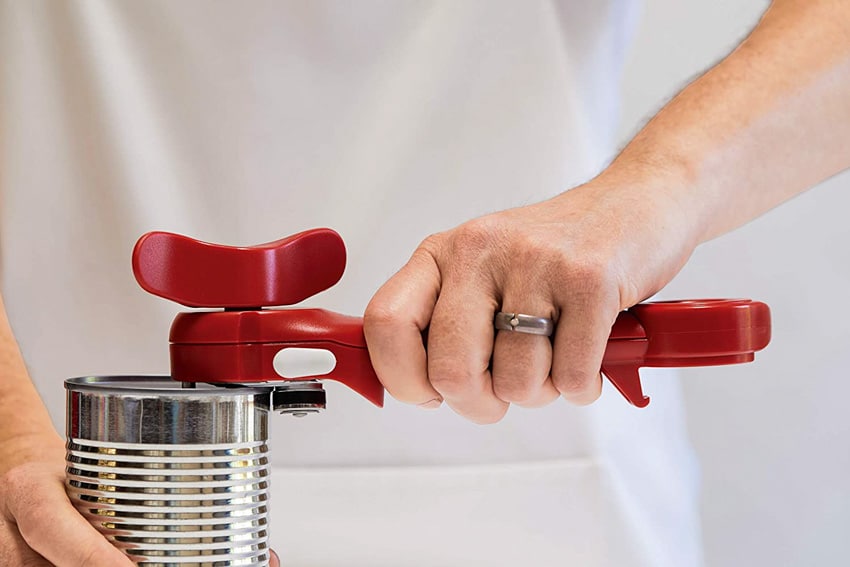
A wand opener typically incorporates side-cut technology that allows you to effortlessly open cans while holding the lid for easy trash can disposal.
This type of can opener is often available in electric models. Furthermore, the attachments that are often included in this type of can opener are compatible with most traditional, round can sizes in the home kitchen wand base, charging port, and wire.
Claw Opener
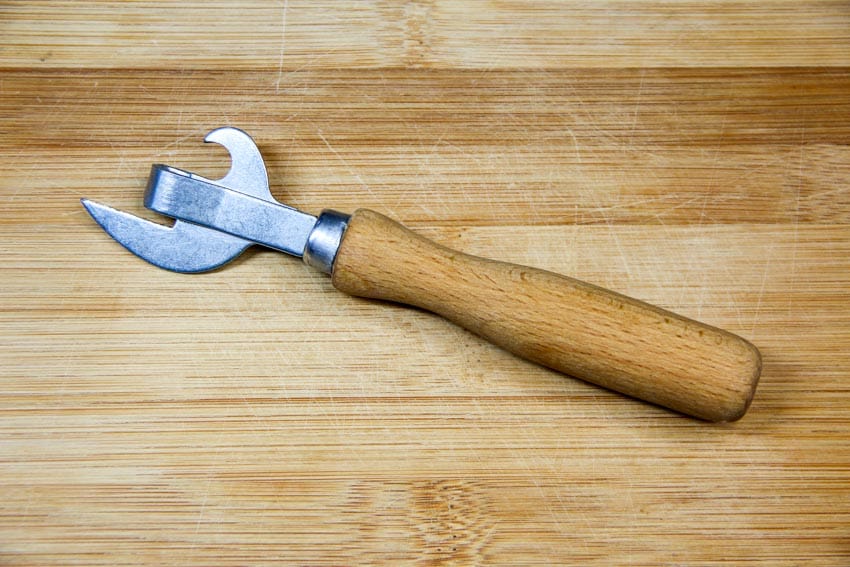
The claw opener is a type of can opener named by its shape, which resembles a claw. This sort of opener is among the most common designs used to cut open cans.
It has a wide sickle-shaped blade that is necessary for perforating the lid of the can as well as opening it. A form of barrier or guard is included on the side of the blade opposing this curve that serves as a deterrent against the blade going too far into the can.
Countertop Opener

Countertop openers are designed to be operated by mounting or fixing them on the kitchen countertop, as their name implies. They frequently include a vacuuming bottom that makes it easier to hold them firmly against most types of kitchen countertops.
The ability to open both standard and pop-top cans is one of this type of can opener’s outstanding qualities. Additionally, they do a superb job of cutting along the can’s side as well as creating a very smooth and safe-to-touch lid.
This also eliminates the possibility of any spiky lid edges that can cut your hands. The majority of these countertop openers have exceptionally easy-touch opening levers that only need a gentle touch to operate.
The proper technique for using these openers is to initially secure the opener tightly in position before securely holding the can’s base. Next, using your other unoccupied hand, you can twist the knob, and the opener’s keen wheel will cleanly and quickly slice into the lid, delivering a properly opened can.
Key Can Opener

Because they are constructed in the shape of a key, key can openers resemble door keys. They are often made of a single curved metal piece that is ideal for breaking thin-walled cans. They must be entirely fitted to the container to function effectively.
Aside from that, these openers are widely utilized in the vast majority of houses as they are simple to use and take up little space. Simply fasten or affix the key opener to the lid to penetrate it with the pointy, jagged edge of the key-shaped device.
The ideal technique to use these openers is to rotate them in a specific orientation so that you can quickly tear a can side and roll it outward or upward.
Bladed Tin Opener
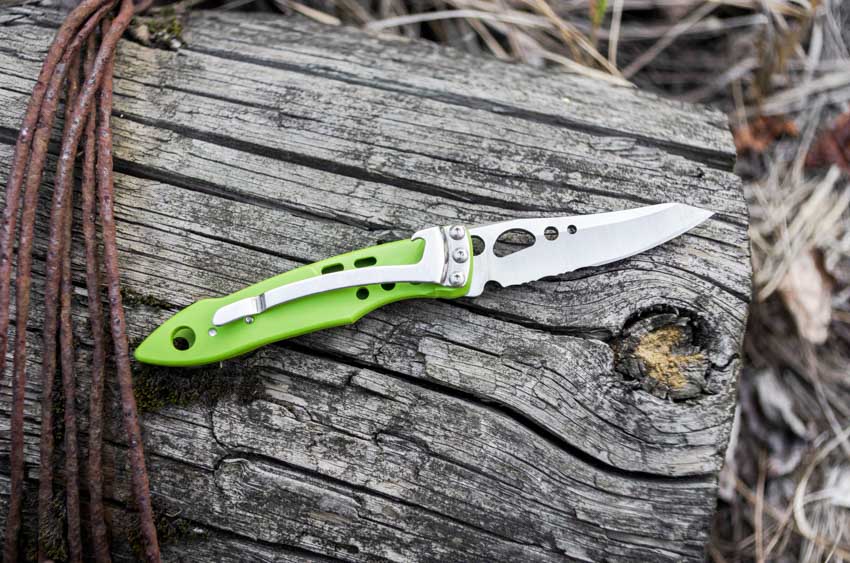
A bladed tin opener is basically comparable to a standard knife. It does not have any special features; all you have to do is slice around the lid using this bladed can opener.
Survival Can Opener
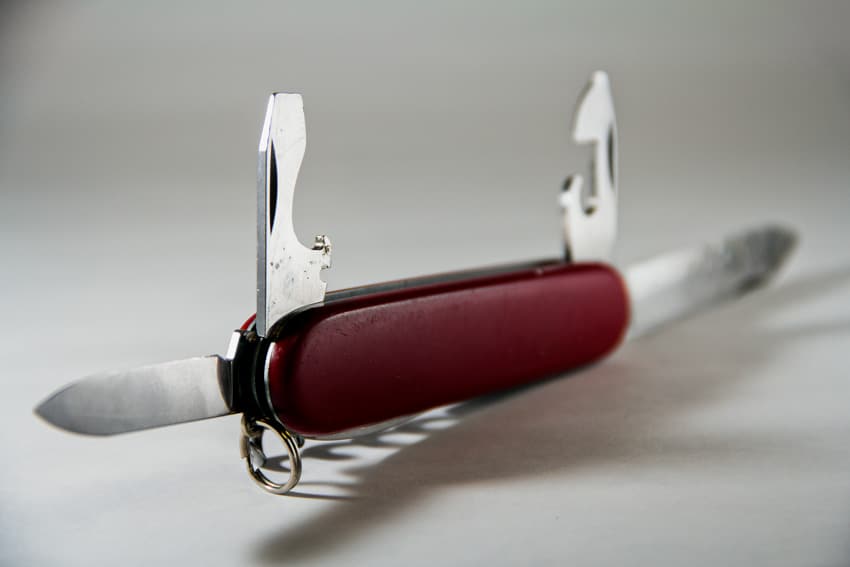
A survival can opener can be any type of can opener as long as it is placed inside your survival kit or go-bag. However, survival openers are usually smaller than typical openers so that they can perfectly fit into your survival kit.
P-38 Can Openers
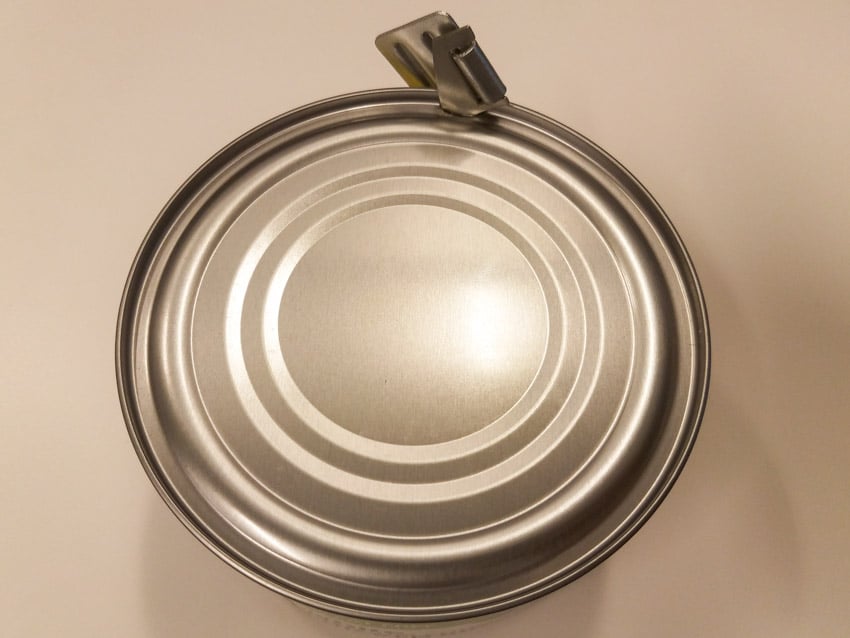
The P-38 can openers, invented in the 1940s, were supplied alongside cans of field rations. They were employed from World War II to the 1980s. The US Marine Corps refers to the P-38 as a “John Wayne” due to its strength and durability.
This opener is around 1.5 inches in length and is pocket-sized, which features a small metal blade that acts as a grip and a thin, movable metal-made serrated blade that folds out to penetrate the can lid.
Can Opener Safety Features
Must be Well-Constructed: A can opener should not be flimsy. If you have a handheld can opener, it should be easy to use and ergonomically designed. The weight of the can must not cause an electric opener to tip over. It must also be able to safely and firmly grasp cans.
Should be Rust-Proof: Choosing an opener made of stainless steel is typically an excellent choice. You would not want rust particles to contaminate your food.
Should be Uncomplicated to Maintain: Manual can openers that are dishwasher-safe are occasionally easier to maintain than electric openers. Nevertheless, if you prefer convenience, electric openers are available. Just make sure that they are user-friendly.
Must be Smooth Edge or Safe-Cut: After cutting, safe can openers must produce smooth, safe edges so you would not cut yourself on the sharp edges of the can or can lid. This can be accomplished by purchasing “safe-cut,” or “smooth-edge” opener models.
The Cutting Wheel Should Not Touch the Food: To avoid cross-contamination, you have to ensure that the opener you purchase features a cutting wheel that does not come into contact with the food.
Whether hand-cranked or electric-powered, the most efficient applied ergonomics to the problem of holding the can, piercing or removing the lid or uncrimping it from the cylinder, and maintaining sanitation by keeping the often dusty lif from falling back into the contents. – Encyclopedia of Kitchen History, Mary Ellen Snodgrass
Since it cuts through the edges of the can, a safe-cut opener can help you achieve this goal. This safe opener’s metal wheel slides underneath the lid’s outer lip, safely lifting and removing the entire lid of the can.
How Big Should A Can Opener Be?
The size of a can opener does not usually matter as long as it can safely and properly open the lid of your can. However, the average size of a handheld opener is around 3” x 2” x 7” to 4” x 3” x 8”.
For electric openers, the average size is around 5” x 5” x 10” to 6” x 6” x 11”. Nonetheless, since there are so many types of can openers, the sizes can greatly vary, and their size will also depend on the sizes of the cans you normally open.
How Do You Take Care Of A Can Opener?

Steps on Cleaning a Handheld Can Opener:
• Wash your can opener well after every use with hot water as well as dishwashing soap. To avoid rust, dry as thoroughly as possible using a kitchen towel. Allow it to dry thoroughly with the handles open before storing it in your cabinet.
• To deep-clean and sterilize your opener, begin by clamping the wheels on a thick sheet of paper towel and turning the handle to get rid of any dirt from the wheels.
• Mix a spoonful of bleach and a gallon of hot water. Spray the liquid all over your can opener along with the wheels and leave it to clean and dissolve any stuck food. Wash the opener and wheels, then rinse completely and dry them.
• Once the opener is totally dry, lubricate the gears and wheels with a small amount of food-grade oil on a paper towel or cloth to avoid rusting.
Steps on Cleaning an Electric Can Opener
• Remember to always unplug an electric can opener before cleaning it, and never submerge the casing in water.
• After each usage, wipe down the opener to eliminate any food spills. Use a sponge that has been moistened in a soapy water solution of liquid dish soap.
• Detach the cutting wheel and lid holder regularly and bathe them in hot soapy water.
• Brush away stuck food; rinse, dry, and reattach the pieces.
Can You Sharpen A Can Opener?
Yes. The blade of the can opener can be sharpened by lightly rubbing it with aluminum foil. You can twist the opener across the course of the aluminum sheet until you have completed several full blade revolutions.
If necessary, you can test the blade and repeat the operation two or three times. You can also try using sandpaper with the same process if aluminum foil does not work.
See more related content in our article about the different types of blenders on this page.




